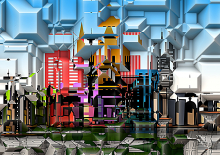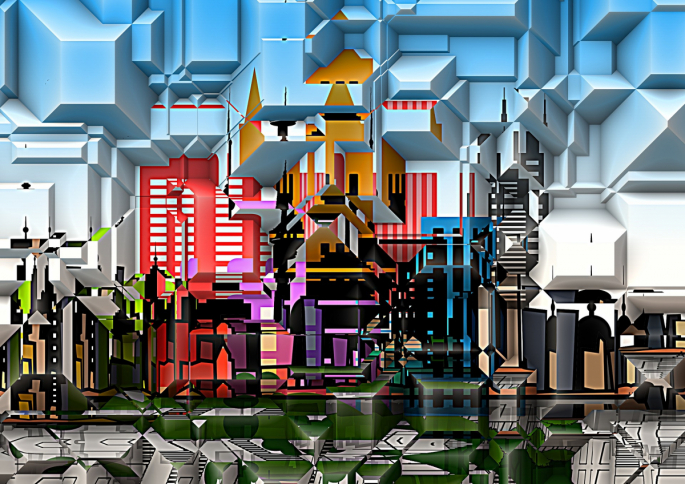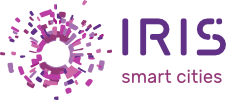
Dr Willem-Jan Renger, head of the Innovation Studio at HKU University of the Arts Utrecht, is driving citizen engagement in smart city planning using methods generally seen in computer game creation, as part of an international consortium of cities, IRIS.
Why do we need to engage citizens in urban planning?
The most important thing to know [when planning a city] is what do citizens want… What do they need? If we start talking to citizens, they bring to the table the key concerns that they have on their level.
Just to name a few of their concerns, there are some traffic issues [in Utrecht] where the cars drive far too fast. There’s some street racing going on and there have been some nasty incidents. When we were dealing with issues that the citizens had put forward, traffic safety was something we considered combining with smart street lighting solutions by creating some clever combinations to help pedestrians to cross the street, for example, or give cars feedback on the basis of their driving. That was the first concept.
How did you bring computer game and design thinking into this gathering of information?
What we’ve done with a small team in Utrecht is that we’ve set up a series of three meetings in a very short space of time. The first was focused on getting citizen input from on their requirements and demands, and the second was within the realm of creatives and technicians from companies that deal with smart street lighting, to turn the demands of the citizens into possible solutions. Finally, we got back to the citizen representatives and we had to pitch our ideas to them in a way that resembled Dragon’s Den. The citizens were empowered by giving them funny money, they got fake euros and they could ‘buy’ into the best ideas. We were publicly presenting our ideas and concepts and they were buying our ideas, the ones they thought would really work. We presented seven concepts and two of those were massively rewarded by the citizens. This way of empathic involvement with end-users is a well established good practice in (game) design and other design disciplines.
So the first concept was to deal with the traffic safety issue through smart street lighting, what was the second concept?
Youngsters in the Netherlands between 14 to 18 have a difficult time because of a new zero tolerance government policy on alcohol and tobacco and drugs. The effect is that they’re not allowed into cafes and bars up until the age of 18, [which means that] regular kids aged between 14 and 18 who want to hang out have no place to go. What they do is they find a quiet spot in the city somewhere, just to hang out with each other and have a good time. And of course there are many occasions where they don’t find the right spot or they create too much noise or they’re perceived to be threatening. We thought that smart street lighting might be a way to create hotspots for youngsters where they are allowed to be, where they can use smart street lights to create a nice atmosphere, maybe get some free WiFi, be able to play music in their little corner where the street light will follow the beat of the music which is technically all potentially possible.
Any other elements of smart street lighting that will be implemented in Utrecht?
Other concepts explored ways where the street lights would follow an individual walking in a dark park. Lights would switch on where you are, and the next one behind your back would switch off, so the light would follow you, instead of being steadily on or off. It’s quite an exciting technology and it’s still unclear what we can take forward in terms of costs and production difficulty and maintenance, and whether it’s safe enough or robust enough from vandalism and all those kinds of ideas.
What about other smart city innovations for Utrecht?
A number of the solutions are very smart ways of dealing with electricity going to the grid and coming back from the grid, using electric cars and buses and using garage boxes with batteries to store the energy and bring it back to the grid.
Then there are other technologies that will find their way into the homes – smart meters to manage your electricity and energy demands in your home, where the solar panels will feed into in terms of bringing back energy or in terms of feeding into energy, where you can monitor your costs and expenditure etc.
What are the particular challenges that you have faced as part of IRIS?
A real challenge is that there are huge differences in demographics and characteristics across a city. There is no “one citizen” [in the same way] as there is no one user in ICT. What works for one group of citizens will not work for another. For example, in mobility in Utrecht, we’re going to explore an electric bus. That’s a great solution because if you take a bus you’re not going to decide between an electric bus or a regular bus, you’ll just hop on the bus. But if people have to rent an electric car, that asks for more of their commitment and change of behaviour in their everyday life, compared to hopping on an electric bus. To make people adopt those new strategies as a replacement of what they already do, like owning a car, or driving a petrol car – that is a major challenge.
In certain cities, smart solutions have backfired, bringing a range of problems that were not foreseen. Take for example electric scooters in San Francisco, which are now cluttering up pedestrian footpaths. What is IRIS doing to anticipate such issues and to minimise the potential problems that could arise?
The San Francisco example shows that the problems that you run into are hardly the ones that you thought about when the plans were drawn up behind the desk. I don’t know if within IRIS we can 100% avoid coming up with a solution that might backfire one way or another, but I believe that all the Utrecht partners are very aware that there are hidden risks or unexpected risks that we might have to face and challenge. Personally I think that one way to try to limit that risk is to look at the issues from a design perspective, focused on adopting a user-centred perspective to overcome challenges and find creative solutions. Then, you might at an early stage think, what if people started doing this or what if they tried to use system X like this, or what if they started playing with the street lights or fooling the cameras or – so I think this approach is a way to better identify those risks, and react to unexpected outcomes you didn’t imagine. Design thinking as a methodology, using iterative steps involving end-users along that process, has proven to be quite a good way of predicting these things happening, compared to more traditional ways of handling.

19 Sep 2018

